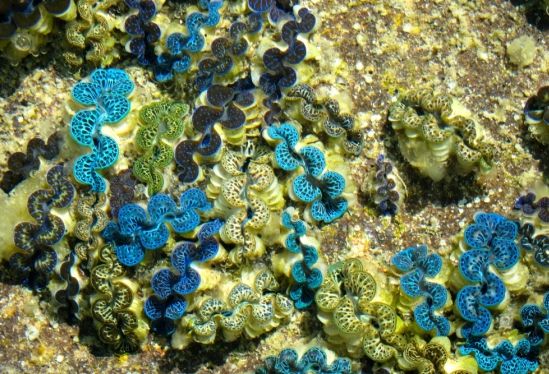UCSB/UPenn Team Discover New Inspiration for Innovations in Alternative Energy

Giant clam (Tridacna gigas) is the largest living bivalve mollusk and one of the most endangered clam species. Brilliant neon-like reflectance from cells in giant clams' epithelium creates colors from deep azure blues or turquoises to greens, golds and reds. Photo: Daniel Morse
Once again nature has provided the inspiration for scientific innovations. Evolution in extreme environments has produced life forms with amazing abilities and traits such as the neon-like giant clam. These endangered clams sport iridescent structures that rival what materials scientists can make in the laboratory.
A team of researchers from the University of California, Santa Barbara and the University of Pennsylvania, has now shown how giant clams use these structures to thrive, operating as exceedingly efficient, living greenhouses that grow symbiotic algae as a source of food. This understanding could have implications for alternative energy research, paving the way for new types of solar panels or improved reactors for growing biofuel.
The study was led by Daniel Morse, founding Director of the Institute for Collaborative Biotechnologies, Professor Emeritus of MCDB and Director of the Marine Biotechnology Center at UCSB and Alison Sweeney, Assistant Professor of Physics and Astronomy at UPenn’s School of Arts & Sciences. The team also includes lead author Amanda Holt, a postdoctoral researcher formerly at UCSB and now at UPenn, as well as Sanaz Vahidinia of NASA's Ames Research Center and Yakir Luc Gagnon of Duke University.
This study was published and featured on the cover in the Journal of the Royal Society Interface, October 1, 2014.
The UCSB Current story.
